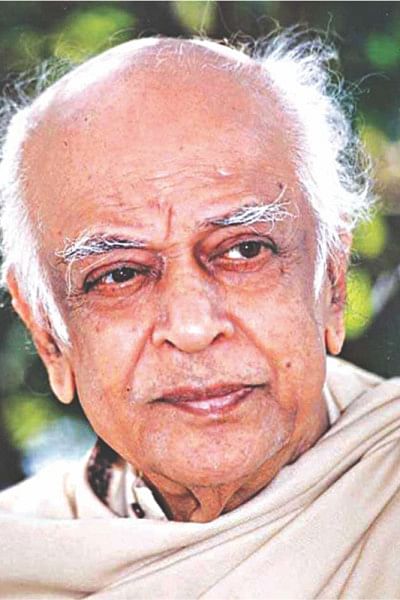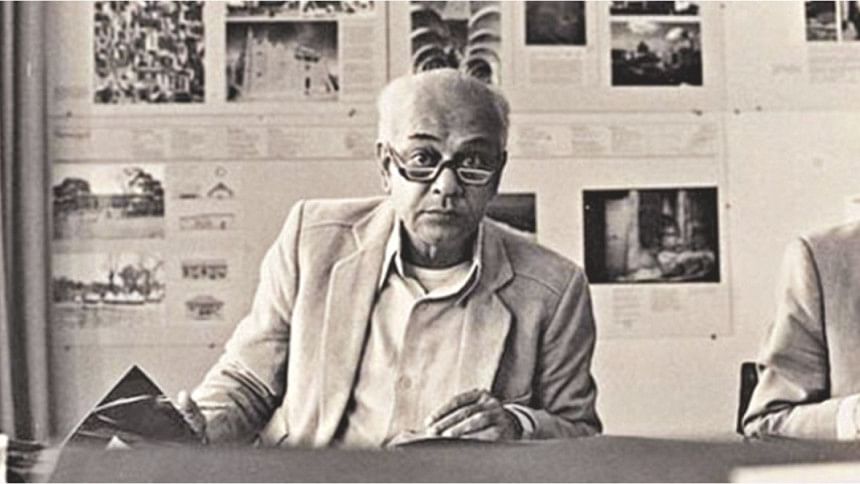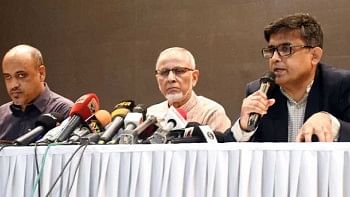A Maestro of Designs

The 19th to the early 20th century witnessed the rise of the Bengali renaissance. Not only helped modernise Bengali culture, but also established the base of modern Bengali art and literature. From this period onwards, Bengal started to slowly step into a modern era. Everything from poems to architecture was a part of this change. Bangladesh, though a big part of this shift, witnessed very little, especially in the architecture department. Modernity was not often seen in Bangladeshi architecture— not until Mazharul Islam came to the scenario.
It was through this man's single handed effort that Bangaldesh saw the beginning of modern architecture. Eyes were turned when this maestro designed the Institute of Fine Arts and the Central Public Library. This was the first time universal modern principles of architecture blended with the nation's own character. Chittagong University campus and Jahangirnagar University campus can also serve as an example of Islam's far sighted brilliance. His designs can be credited for starting Bangladesh's renaissance in contemporary architecture.
Though Mazharul Islam started his career as a trained engineer, he opted for further study in architecture and went to the University of Oregon in the United States and to Yale University where he received a Masters degree under the supervision of Paul Rudolph. It was upon his return to East Pakistan (now Bangladesh), Islam designed Dhaka Public Library and Institute of Fine Arts. These two designs also established the characteristics of Bangladeshi architecture. We are talking about a person who was a socially and politically conscious activist. His designs were a reflection of Bangladesh itself, keeping in mind the geography, climate and the expressions of its own culture. Islam always kept our climate in his mind for which his designs always played around shade and shadow. One of the primary examples of his thinking can be seen in Charukala (Institute of Fine Arts, Dhaka University) where the design echoes the influence of the out house and inner house designs of rural Bangladesh.

Islam is one of the reasons why Architecture transcended into art in Bangladesh. In an interview given to Shamsul Wares, he once said, “While architecture starts with specific practical day-to-day necessities, it has to, at the same time, transcend to the level of art. Architecture must inspire the people, for whom it is built, by creating spaces that incite the finer, more gracious aspects of the mind.”
Mazharul Islam is also credited to be the advising designer of Jatiyo Sangshad Bhaban. The proposal was first passed to him. Islam was the one who suggested the famous Louis I Kahn to be the main architect of this project. lslam also invited architect Stanley Tigerman and Paul Rudolph to join him in Bangladesh. The three architects became popular as the American Trio, and between them they designed a huge number of high profile buildings. Islam was the designer of the Dhaka city’s master plan.
One of the main aspects of this maestro was that he did not only consider architecture as a functional art form but as a medium to achieve better life. He rejected all outdated elements in architecture and avoided conventional enhancements which were useless and expensive. Islam insisted on creating an open and straightforward design, illuminating the value of local materials without chauvinism, “Although he used simple methods, Islam's genius and creative powers abled him to create a thoughtful architecture, expressing the characteristics of the educated middle class,” says Afroza Parvin, Professor of Department of Architecture, Khulna University.

Islam was awarded the Bangladesh Gold Medal from the Institute of Architects; the Honorable Fellowship from the American Institute of Architects; and the Independence Day Award.
Muzharul Islam is the single most dominant influence on modern architecture in Bangladesh. Fifty eight years since he began his practice, the influence is still seen around us. Only calling him an architect, is like calling Rabindranath Tagore just a littérateur. He was a philosopher, a great mentor and an activist— to create Bangladesh's own style in architecture. Even though Islam passed away on July 15, 2012, his contribution will forever be remembered in developing our country's own identity.
Most of the information was sourced from www.muzharulislam.com

 For all latest news, follow The Daily Star's Google News channel.
For all latest news, follow The Daily Star's Google News channel. 



Comments